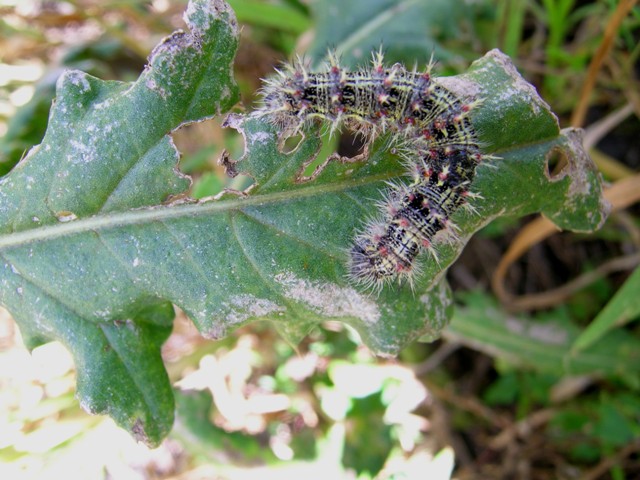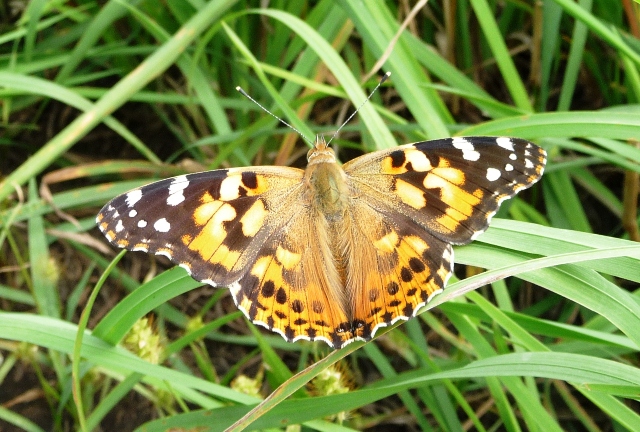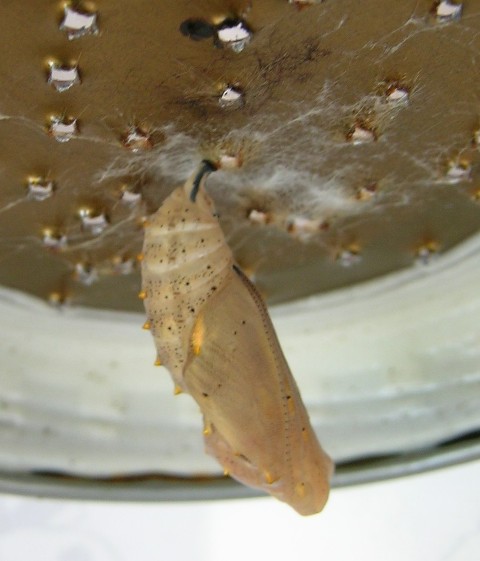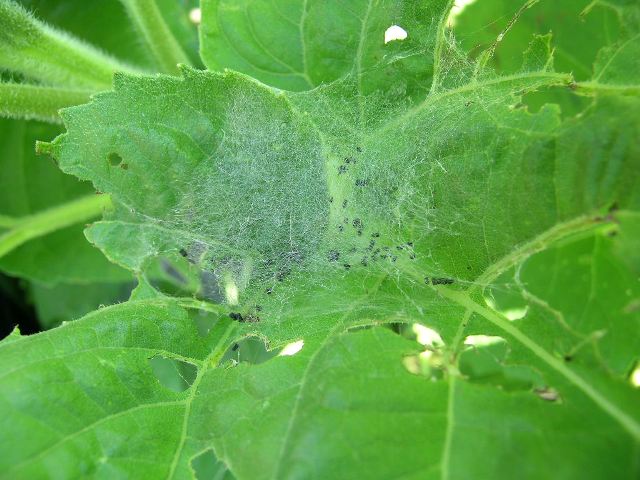Thistle Caterpillar
Thistle caterpillar (Vanessa cardui) has been an occasional pest of sunflowers. Sporadic outbreaks in the Prairies have resulted in localized damage to crops.
Host Crops
Larvae (Figure 1) feed primarily on Canada thistle foliage, leaving the stem and midrib. Feeding temporarily inhibits the weeds but new growth usually develops in the fall. They also feed on more than 100 other hosts, including sunflowers, soybeans, corn, alfalfa, canola, mustard and borage.
Biology
Adults, commonly know as painted lady butterflies (Figure 2), migrate into the Prairies from overwintering sites in southern California and Mexico. They often arrive in June, although in some years they can be entirely absent. Periodic increases in populations of these butterflies at their overwintering sites can initiate mass migrations of adults northwards. There is some evidence of a return migration in the fall. There is no evidence that they can survive our cold winters. Adults will visit a wide variety of flowers for nectar. This butterfly normally prefers to lay eggs on Canada thistle plants but under some conditions, will lay eggs on other plants as well.
Larvae feed on leaves of host plants. Larvae also build a nest by producing a loose webbing (Figure 4), which at times may result in the leaves being folded or tied together. Frass produced by the larvae may become entrapped in the nest. The larvae are up to 30 millimetres (1.25 inches) long and dark purple to black, although the colour of the larvae can vary. They have long spines on each segment of the abdomen.


Figure 1. Larva of thistle caterpillar. Figure 2. Adult.


Figure 3. Pupa of thistle caterpillar. Figure 4. Webbing and frass from thistle caterpillar.
| June | July | August | September |
| Butterflies arrive and egg laying and larval feeding begins | Larval feeding continues, pupation starts | Pupation continues, new butterflies emerge | Populations die-off |
Scouting Techniques
If populations seem heavy, sample about 100 scattered plants, noting the per cent defoliation on each. Divide the total per cent defoliation by the number of plants sampled to obtain an estimate of per cent defoliation for the field. In some instances, larvae may move to crops from nearly patches of Canada thistle, and be more numerous near these patches.
Economic Thresholds
Although specific economic thresholds for thistle caterpillar have not been developed, nominal thresholds have been suggested for sunflowers and soybeans based on knowledge of the impact of defoliation on these crops.
Sunflowers: The threshold is 25 per cent defoliation in sunflowers provided that most of the larvae are still under about 3 centimetres (1 1/4) inches) long. If the majority of larvae are fully grown, most of the feeding damage will have already occurred.
Soybeans: A suggested threshold is 25 to 30% defoliation prior to bloom; 20% after bloom or pod set.
Control
Revised: December 2015

